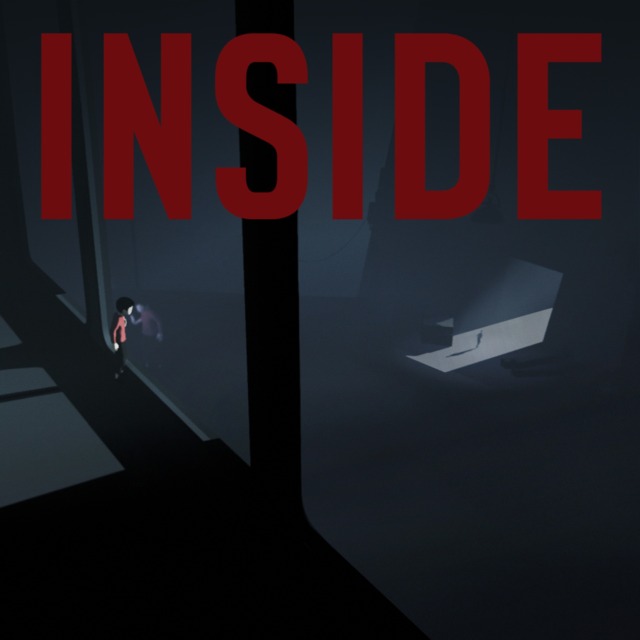I would like to preface this post by saying I haven't read or watched anyone else's analysis while writing this.
The story of INSIDE is about control and conformity, The game starts as a boy being completely oppressed by the world around him, coldly being strangled or shot on sight. But as the game progresses he gains more knowledge and therefore control allowing him to overcome his obstacles. One prominent example of this is dogs: at the beginning of the game, you’re only option is to run from the dogs, then you learn to trick them by climbing back and forth over a fence that they have to lengthily circumvent, and by the end of the game a small pack barks at you but is too afraid to actually attack you. In many ways he gains control using the same methodology as the oppressors, like using their mind controlled zombies and jet powered boxes. At the end of the game, the boy thinks he’s gained complete control when pulling the mind control cords out of the zombie flesh monster, but he still gets sucked up into it. After slowly becoming more like his oppressors, he literally embodies conformity and becomes the monster he was fighting against.
During the first playthrough, the little boy’s goal appears to be purely survival. He’s constantly covering new ground because nowhere is safe. During this first playthrough, the boy’s goals line up with gameplay and player motivation in terms of puzzle solving. Both me and the boy don’t really know what our end goal is, but we know that we need to use this rope and that lever in order to progress. For him progressing is continuing his escape, while the player is progressing closer to the end of the game. As the player, we assume that we are in total control of the boy, but we don’t really understand the context for a lot of actions we make the boy do; why am I pulling out this worm from a pig, or why am I moving this box around even before I know of it’s usefulness? This ludonarrative dissonance always inhibits immersion for me, because player character doesn’t know that they are solving video game puzzles, like I do.
INSIDE’s theme of control and subverting control doesn’t only exist between the boy and the corporation, it’s also between the player and the boy. The player assumes that they are in complete control over the boy, because we think we know more than him because of our previous puzzle game experience and we control his every movement like the mind control helmet. We think we are pushing him along to further our goal of beating the game, but the farther into the compound you get, the more you sense that the boy has a specific goal in mind unbeknownst to the player.
The boy’s goal is to free the blob, but fails and gets sucked into it. Then the combination of the two escape the facility and roll down the mountain. At the bottom, the blob lands on the beach resembling a beached whale. After the credits, the game restarts, and the beginning of the game is the boy sliding down a hill into the forest. It’s implied that the boy falls out of the blob and back into the beginning of the game. Thus, the story of INSIDE is cyclical, where the boy always runs right only to fail and end up back in the forest.
This revelation recontextualizes who’s in control of the boy and flips dramatic irony on it’s head. Throughout the first playthrough, the boy knows more than the player. We aren’t controlling a naive little boy and helping him escape,but rather he is story’s driving force who knows exactly what challenges lie ahead of him. He is in more control than us because this is the first time we’ve seen what he’s seen possibly dozens of times. Learning about INSIDE’s reverse-dramatic irony redeems and explains the video game-y puzzle ludonarrative dissonance that bothered me through the first playthrough. Now with the boy’s past revealed, we know that he would grab this box as fast as the player would because he’s seen it before and already knows what to do.
While the boy is actually in more control than the player, and occasionally the corporation, he still can’t control his fate. At the end of the game he wants to free the mind controlled blob, but fails after getting sucked into it and killing it after escaping the facility. The progression of the game is the boy’s Sisyphean torment, fighting an uphill battle against control, but like clockwork always fails spectacularly with the ball literally rolling back down a hill and the boy having to restart the process, for all eternity. The only way for it to be stopped is to turn off the game, or in the boy’s case through the secret ending after finding all of the secrets (of which he has infinite cycles to find), in which he literally unplugs a cord to end the game.

Log in to comment